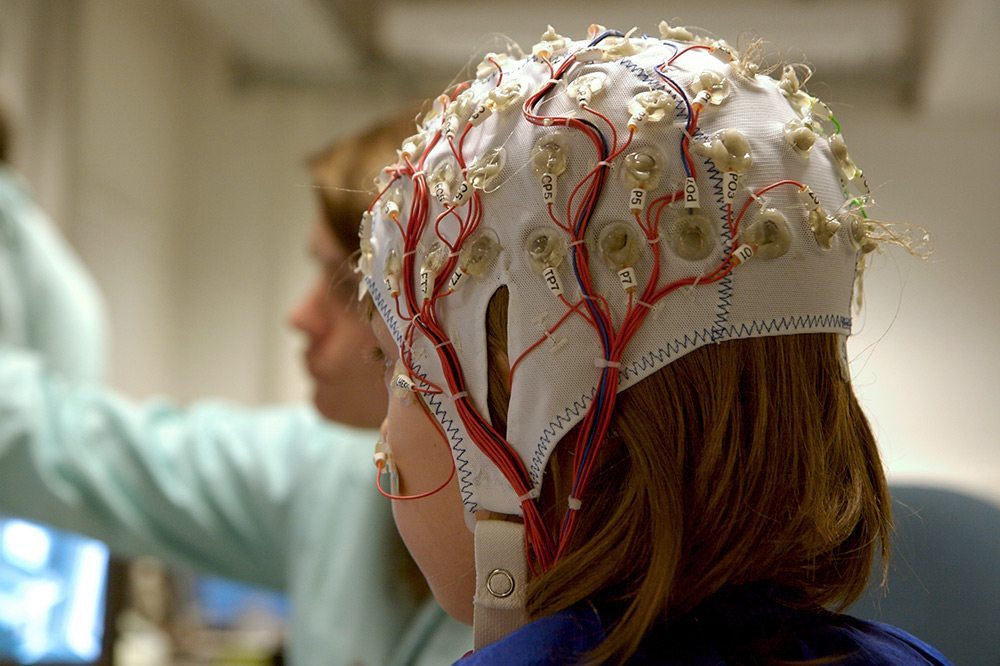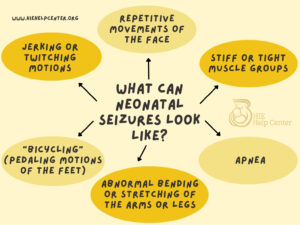Please know that the HIE Help Center is owned by a medical malpractice law firm that focuses on cases involving HIE and other birth injuries. We try to provide useful medical information to our readers, but we cannot provide treatments or medical advice. If you think your child may be having a seizure, please call 911/your country’s emergency number or your doctor.
 One of the most common signs that a baby might have hypoxic-ischemic encephalopathy (HIE) is the presence of seizures after birth. These can cause involuntary jerking motions and visible symptoms, but in some cases, the signs are very subtle. Seizures can actually worsen brain damage in cases of HIE. The best (and sometimes only) way to detect a baby having a seizure is using an EEG monitor to look for abnormal electrical activity in the brain.
One of the most common signs that a baby might have hypoxic-ischemic encephalopathy (HIE) is the presence of seizures after birth. These can cause involuntary jerking motions and visible symptoms, but in some cases, the signs are very subtle. Seizures can actually worsen brain damage in cases of HIE. The best (and sometimes only) way to detect a baby having a seizure is using an EEG monitor to look for abnormal electrical activity in the brain.
Statistics About Infant Seizures
About half of newborn seizures are subtle seizures, which can be hard to see. An additional quarter of infant seizures are classified as clonic seizures, marked by a slow rhythmic jerking or twitching of one body part. Another 5% of infants have tonic seizures, marked by sustained contractions, sometimes accompanied by rolling eyes and apnea. The most severe type of seizures is myoclonic, because myoclonic seizures indicate very severe brain damage. Infant seizures are marked by very fast twitching or jerking, and are most often found in premature babies.
What Do Seizures Look Like in a Baby?
 Seizures may manifest differently in different babies. In addition to jerking or twitching motions, a baby having a seizure can show the following signs (among others):
Seizures may manifest differently in different babies. In addition to jerking or twitching motions, a baby having a seizure can show the following signs (among others):
- Apnea (a time period during which they stop breathing)
- Repetitive movements of the face
- “Bicycling,” which appears as pedaling motions of the feet
- Stiff or tight muscle groups
- Abnormal bending or stretching of the arms or legs
Recognizing the Risk Factors for Seizure Activity
If a baby is born not breathing, has a low APGAR score, or needs to go to the NICU after delivery, these are signs that the child is at risk for seizures. Risk factors for seizures are often very similar to the risk factors for hypoxic-ischemic encephalopathy.
Recognizing when a seizure is occurring is crucial to making sure your child gets proper treatment. While a diagnosis is carried out by medical professionals using tests such as EEGs, MRIs, and CT scans, parents can learn about when seizures are more likely to occur and bring up any concerns they may have with their child’s medical providers.
Infant seizures can be a result of medical malpractice.
Our legal team has fought on behalf of children to obtain the justice and compensation they deserve.
Infant Seizures: Next Steps
If you see signs of seizure in your infant, you should call 911 immediately, especially if it is their first seizure. During this time, make sure that your infant is away from anything that could cause injury, such as hard objects or something that could get stuck in their mouth. Once you get to the hospital and the baby is examined, your doctor may prescribe medications or recommend other means of controlling/preventing future seizures.
If they get diagnosed with a seizure disorder and have frequent episodes, you should discuss with your doctor how you should respond to a seizure and work together to put a in place to treat your child’s seizures.
The Epilepsy Foundation & Related Resources
If your child is diagnosed with a seizure disorder, there are many resources that can help you. The Epilepsy Foundation has a lot of useful information on caring for a child with frequent seizures, as well as resources for all ages – everything from summer camps for kids with epilepsy to driving safety. They have a toll-free helpline in both English (1-800-332-1000) and Spanish (1-866-748-8008).
For more information on infant seizures and how to care for a child with a seizure disorder, check out our related resources:
About the HIE Help Center
The HIE Help Center is run by Reiter & Walsh ABC Law Centers, a medical malpractice firm exclusively handling cases involving HIE and other birth injuries. Our lawyers have been advocating for children with HIE and related disabilities since the firm’s inception in 1997.
If you suspect your child’s birth injury may have been caused by medical negligence, contact us today to learn more about pursuing a case. We provide free legal consultations, during which we will inform you of your legal options and answer any questions you have. Moreover, you would pay nothing throughout the entire legal process unless we obtain a favorable settlement.
You are also welcome to reach out to us with inquiries that are not related to malpractice. We cannot provide individualized medical advice, but we’re happy to track down informational resources for you.

